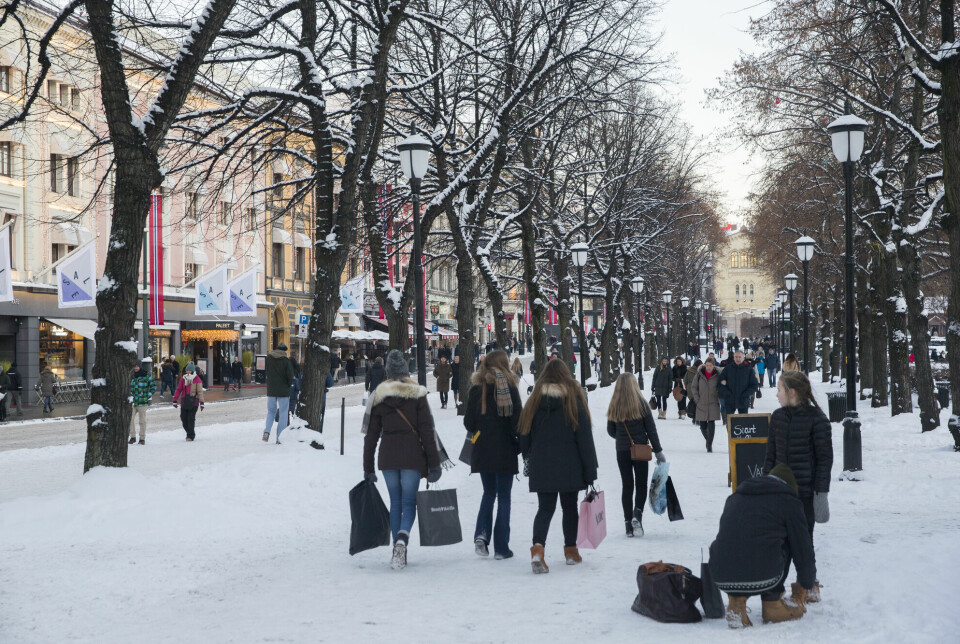
Trees in cities are not always good for air quality
A common argument for more trees in cities is that they improve air quality. A new Norwegian study suggests that trees can also negatively affect air quality.
“It’s tempting to view trees as large scrubbing brushes that attach lots of impurities to themselves, but unfortunately, urban trees don’t have the significant effect on air quality that we would hope for,” Erik Stange says.
He is a researcher at the Norwegian Institute of Nature Research (NINA) and contributed to the new study.
Most viewed
“Particles do attach themselves to the surfaces of vegetation, that's true. But the effect is extremely small, at least compared to the effect of wind and humidity,” he tells sciencenorway.no.
Researchers from NINA and the Norwegian Institute for Air Research (NILU) have looked at air quality measurements from 2,615 measuring stations in American and European cities between 2010 and 2019.
They have linked this with satellite images of trees and green areas around the measuring stations. This is how they have examined how air quality is affected by green pockets in the cities. The conclusion is that trees and greenery can provide both better and worse air quality.
Canopies prevent the exchange of air
The new study shows that many trees in one place can also lead to worse air quality:
- Dense tree canopies prevent the exchange of air in street corridors (street canyons).
- Barriers of vegetation along roads can contribute to a higher concentration of air pollution at the roadside.
- Vegetation can produce volatile organic compounds (VOC), but this is mainly a problem in warmer climates than Norway.
“It can be quite bad, especially if we’re talking about street canyons, where both vegetation and buildings prevent particles from being blown away,” says Stange.
He offers advice to those planning trees and green spaces in cities:
“You should avoid dense tree canopies along roads with heavy traffic and buildings on each side, because it's almost like putting a lid on the area, preventing ventilation,” he says.
While air quality can be negatively affected in individual streets, the researchers also found that cities with a lot of greenery had slightly better air quality overall.
Want trees for other reasons
Stange is clear that the solution is to place the trees correctly, not to have fewer trees in cities.
“Trees improve the microclimate. They make heatwaves more bearable and slow down the wind in colder climates. They also help to manage stormwater during heavy rain and to increase biodiversity, in addition to being an aesthetic element that can contribute to well-being,” he says.
In 2020, NINA published a study where researchers looked at how the trees in Norway’s capital Oslo affect the city’s climate.
“Some districts in Oslo would have been up to three degrees warmer on average during the heatwave in July 2018 without city trees,” NINA researcher Zander Venter said in an article about the study on the institute's website (link in Norwegian).
There is also a difference between trees. According to a Swedish study from 2023, different trees have different abilities to absorb air pollution. The research, conducted in the botanical garden in Gothenburg, shows, among other things, that conifers are better than deciduous trees.
“Another advantage of conifers is that they also function as air purifiers in winter when air pollution is usually at its highest,” Jenny Klingenberg, one of the researchers behind the study, said in a press release.
Cities have become less polluted
Even though trees in the city do not always lead to improved air quality, the cities researchers have studied have become less polluted over time.
The cities had, among other things, experienced a reduction in particulate matter.
The researchers write that the decrease in particulate matter suggests that political measures to reduce local pollution have been successful.
“We see a clear connection between the decrease in local and regional emissions and improvement in air quality. This involves implementing policies and regulations that force factories or energy sources to emit less,” says Stange.
He says he has the impression that few are aware of how trees and green spaces affect air quality in cities.
He believes this also applies to many involved in urban planning.
"Often, the argument for increasing vegetation in urban areas is primarily framed around improving air quality," he says.
Reference:
Venter et al. Reassessing the role of urban green space in air pollution control. Proceedings of the National Academy of Sciences, 2024.
———
Translated by Alette Bjordal Gjellesvik
Read the Norwegian version of this article on forskning.no






































